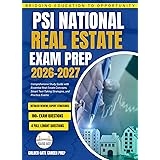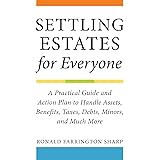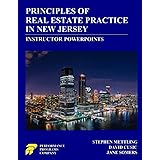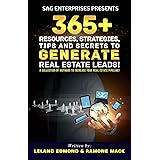The vast landscape of real estate investing offers an array of pathways for wealth accumulation, making the initial choice of strategy a critical decision. As extensively discussed in the accompanying video, discerning which approach aligns best with one’s financial objectives and risk tolerance is paramount. This article serves to complement that discussion, providing a comprehensive analysis of various real estate investing strategies, their inherent advantages, notable disadvantages, and the nuanced considerations that should inform an investor’s selection.
A structured evaluation of these real estate investing strategies is essential for prudent capital deployment. The subsequent sections will elaborate on each methodology, offering deeper insights into their operational mechanics, financing implications, and potential for generating returns, thereby enhancing an investor’s strategic framework.
Deconstructing Core Real Estate Investing Strategies
Understanding the fundamental principles and operational specifics of each real estate investing strategy is crucial. While all methods possess viability for generating substantial wealth, their applicability and effectiveness are profoundly influenced by market conditions, capital availability, and investor engagement levels.
Flipping: High Reward, Elevated Risk
House flipping involves the acquisition of a distressed property, subsequent renovation to enhance its value, and then resale for a profit within a relatively short timeframe. This strategy is frequently associated with significant profit potential; for instance, experienced flippers in affluent markets such as the Bay Area are often observed generating seven-figure annual incomes, which is considered a benchmark for successful operations in that region.
However, the risks associated with flipping are substantial. Property acquisition is undertaken with presumptions regarding renovation costs and the eventual After Repair Value (ARV). The true condition of a property is often not fully ascertainable until extensive demolition begins, potentially revealing unforeseen and costly repairs, such as foundation issues, extensive plumbing overhauls, or HVAC system replacements. These unexpected expenditures can dramatically erode profit margins. Furthermore, market volatility presents a significant hazard; a downward shift in property values during the renovation and selling period can severely impact the anticipated ARV. The reliance on hard money loans, characterized by higher interest rates and typically a one-year term, exacerbates this risk. Delays in renovation or sale can lead to accrued interest and, in severe cases, foreclosure, resulting in a total loss of investment. Consequently, while flipping offers considerable upside, it demands meticulous planning, robust capital reserves, and a keen understanding of market dynamics.
Wholesaling: Entry-Level Accessibility with Sales Acuity
Wholesaling is often heralded as an accessible real estate investing strategy for newcomers due to its relatively low capital requirements. This method primarily involves securing a property under contract at a favorable price and then assigning that contract to an end buyer, typically another investor, for a fee. The wholesaler does not take ownership of the property; instead, their value is created by identifying distressed properties and motivated sellers.
The principal benefit of wholesaling lies in its minimal financial risk, primarily confined to marketing expenditures and the nominal earnest money deposit (e.g., $100) required to establish a legal contract. However, success in wholesaling is heavily contingent upon exceptional sales and marketing capabilities. Extensive cold calling, direct mail campaigns, and door-knocking are commonly employed, necessitating resilience in the face of frequent rejections. The competitive landscape for wholesaling is intense, as its low barrier to entry attracts numerous participants. A significant drawback is the absence of asset ownership, precluding any benefits from property appreciation or the tax advantages typically associated with real estate holdings. Moreover, profits derived from wholesaling are generally taxed at the highest short-term capital gains rates, diminishing net returns.
Land Investing: Simplicity Versus Illiquidity
Investing in raw land involves purchasing undeveloped parcels, often at a discount, with the intention of reselling them to developers or other parties interested in future development. A key advantage frequently cited is the low competition for land acquisitions, allowing investors to secure properties for “pennies on the dollar,” particularly from owners burdened by ongoing property tax obligations for unused plots.
Nevertheless, land investing is frequently characterized by substantial challenges. Financing raw land is notably difficult; traditional lenders are often unwilling to provide loans for undeveloped parcels, rendering it a highly cash-intensive endeavor. The illiquidity of land is another significant concern; selling periods can be protracted, and the asset generates no rental income while held, meaning property taxes represent a continuous drain on capital. Unlike income-producing properties, raw land does not offer the same avenues for wealth accumulation through cash flow or leveraging, making its appeal largely speculative and contingent on future development prospects.
Buy and Hold: The Cornerstone of Wealth Generation
The buy and hold strategy, which entails acquiring rental properties to generate passive income and long-term appreciation, is widely regarded as one of the most effective real estate investing methodologies for sustained wealth building. This approach typically targets one-to-four unit residential properties, which qualify for advantageous financing terms, including 30-year fixed-rate mortgages. These fixed rates offer unparalleled predictability for one of the largest expenses associated with property ownership, providing a stable financial foundation.
Over time, buy and hold investors benefit from several powerful wealth generators: property values generally appreciate, rental income increases (often offsetting inflation), and mortgage principal is paid down by tenants. Furthermore, significant tax advantages are realized through depreciation deductions and potential 1031 exchanges, which allow for tax-deferred reinvestment of sale proceeds. Unlike transactional strategies like flipping or wholesaling that require continuous deal sourcing, buy and hold investments, once established, provide a more passive income stream, allowing investors to focus on portfolio growth rather than constant activity.
Short-Term Rentals: Enhanced Cash Flow, Elevated Management
Short-term rentals, facilitated by platforms such as Airbnb and Vrbo, involve renting out properties on a nightly or weekly basis. This strategy typically offers significantly higher gross income compared to traditional long-term rentals, often yielding two to three times the cash flow potential. Moreover, investors retain ownership of the asset, benefiting from appreciation and some tax advantages, similar to buy and hold properties. This approach also allows for the acquisition of potentially nicer properties that can still cash flow effectively, as demonstrated by properties in diverse markets like the Bay Area and Dallas.
Despite the attractive cash flow, short-term rentals are considerably more service-intensive. The frequent turnover of guests necessitates robust property management, including cleaning, maintenance, and guest communication. Income consistency can fluctuate significantly due to vacancies or seasonality. Furthermore, the increased wear and tear on properties mandates more frequent renovations and a dedicated team to maintain peak condition. A burgeoning challenge for this sector is the increasing regulatory scrutiny from municipalities, with numerous cities enacting ordinances or outright bans on short-term rentals. This evolving regulatory landscape introduces considerable operational risk and necessitates diligent monitoring of local zoning and hospitality laws.
Syndication: Passive Participation, Operator Dependency
Real estate syndication enables passive investors to pool their capital for the acquisition of larger properties, typically multi-family assets, which are then managed by an experienced operator. Investors, usually as limited partners, contribute a specified amount (e.g., $50,000) and receive a preferred return (often around 8%), along with potential distributions based on a defined “waterfall” profit-sharing structure. This mechanism provides some tax benefits and participation in property profits without requiring active management.
The primary concern with syndication is the inherent dependency on the operator’s competence and integrity. Investors relinquish direct control over their capital and the project’s execution. A mismanaged project, irrespective of its initial promise, can lead to substantial losses. While syndication offers a passive investment avenue suitable for high-net-worth individuals with limited time, the limited upside potential (relative to direct ownership) and the significant risk associated with operator performance often lead to a cautious evaluation. Alternative deployment of capital, such as direct ownership of buy and hold properties, is often preferred for those seeking greater control and direct asset benefits.
Multi-Family Investing: Scaled Returns, Complex Financing
Multi-family investing involves the direct acquisition and ownership of apartment buildings, ranging from small complexes to large developments. This strategy is highly favored for its potential for scaled returns, providing multiple income streams from numerous tenants within a single asset. Tax benefits associated with multi-family properties are also considerable, contributing to overall investor returns.
However, financing multi-family properties presents a more significant hurdle than residential buy and hold. As commercial real estate assets, they necessitate commercial loans, which typically demand higher down payments (e.g., 35% compared to 20% for residential). Commercial loan terms are also less favorable; amortization periods are generally shorter (20-25 years), resulting in higher principal payments, and loan terms are often limited to five years, requiring frequent refinancing. This short-term nature exposes investors to interest rate risk, as evidenced by the dramatic rate increases observed between 2019 and 2024. A refinancing event during a period of high rates can substantially increase mortgage payments and impact property valuations, making disposition challenging. The operational complexities, including managing a larger tenant base and adhering to commercial property regulations, also require a sophisticated approach.
Lending (Private Money): Fixed Returns, Limited Upside
Private money lending involves an individual acting as a bank, providing capital to other real estate investors (e.g., flippers or buy and hold investors) in exchange for a fixed interest rate, secured by a promissory note and deed of trust. This strategy is attractive to those seeking passive income without the operational demands of direct property ownership, offering returns typically in the 8% to 12% range.
Similar to syndication, private lending necessitates a significant reliance on the borrower’s ability to execute their real estate project successfully and repay the loan. Due diligence on the borrower and the underlying collateral is paramount to mitigate default risk. A key limitation is the absence of asset ownership, which means lenders do not benefit from property appreciation, tax advantages (such as depreciation), or other perks associated with direct real estate investment. The upside is capped at the agreed-upon interest rate, offering limited growth potential compared to equity participation. Therefore, it is often considered most suitable for investors with substantial capital who prioritize predictable, albeit moderate, returns and wish to avoid active management responsibilities.
Commercial Real Estate: Capital-Intensive, Market-Sensitive
Commercial real estate (CRE) encompasses a broad category including office buildings, retail centers, industrial warehouses, and other income-producing properties not used for residential purposes. Investing in CRE requires substantial capital, typically demanding a 35% down payment. Financing structures mirror those of multi-family commercial loans, featuring shorter amortization schedules (20-25 years) and five-year loan terms that necessitate frequent refinancing, exposing investors to interest rate fluctuations and market shifts. The returns on CRE, while potentially significant, are often not described as “super amazing” relative to the high capital commitment and inherent complexities.
The CRE market has experienced considerable disruption, particularly in the post-COVID-19 era. The rise of remote work has impacted office occupancy rates, while the growth of e-commerce has challenged traditional retail sectors, leading to mall closures and underperforming strip malls. These secular shifts introduce significant headwinds and valuation pressures. Consequently, while CRE can be a viable investment for extremely high-net-worth individuals seeking portfolio diversification or specific asset plays, it currently presents heightened risks and complexities for most investors, warranting a cautious approach.
Subject To: Niche Strategy with Specific Risks
“Subject to” investing involves acquiring a property by taking over the seller’s existing mortgage, effectively assuming responsibility for their loan payments without formally qualifying for a new loan. This strategy is particularly appealing when the seller’s mortgage has a significantly lower interest rate, offering a distinct advantage in a high-interest-rate environment. For example, if a property valued at $500,000 has an existing mortgage of $200,000 at a 3% interest rate, the buyer could assume that low-interest portion.
However, the execution of subject to transactions often demands a substantial cash contribution from the buyer. In the scenario above, if the buyer traditionally finances 80% of the purchase price, they would contribute $100,000 (20%) and the bank would lend $400,000. If taking over a $200,000 loan, the buyer would need to provide $300,000 in cash to cover the remaining equity. This high cash requirement often negates the primary benefit for many investors who struggle with down payment affordability. Furthermore, most mortgages contain a “due-on-sale” clause, which technically permits the lender to demand full repayment upon property transfer, although this clause is rarely enforced if payments are consistently made. The success of a subject to deal hinges on finding highly motivated sellers willing to accept this arrangement and requires a nuanced understanding of its legal and financial implications, making it a specialized and less reliably scalable strategy.
BRRRR Method: Strategic Leveraged Growth
The BRRRR method (Buy, Renovate, Rent, Refinance, Repeat) represents a highly strategic and aggressive approach to real estate investing, fundamentally combining elements of flipping and buy and hold. It begins with acquiring an undervalued property (Buy), often at wholesale prices, and then implementing value-add renovations (Renovate) to significantly increase its equity. Once renovated, the property is rented out (Rent) to generate cash flow. The crucial “Refinance” step involves a cash-out refinance to extract the newly created equity, effectively replenishing the investor’s capital. This capital is then used to acquire another property, perpetuating the cycle (Repeat), theoretically allowing for infinite returns on initial capital.
The BRRRR strategy is immensely powerful for rapid portfolio expansion and wealth creation. However, its effectiveness is highly sensitive to market conditions, particularly interest rates. In periods of high interest rates, the cost of refinancing can diminish the profitability of the “Refinance” step, as increased mortgage payments can erode cash flow or make it challenging to pull out sufficient equity while maintaining positive cash flow. Each refinancing event also incurs closing costs, typically ranging from $5,000 to $10,000, which must be factored into the financial analysis. While the BRRRR method is conceptually an ideal strategy for leveraging equity, its practical application is more challenging when refinancing costs are elevated, requiring more stringent deal analysis and execution to ensure profitability.









